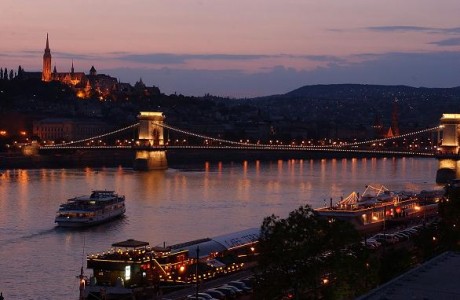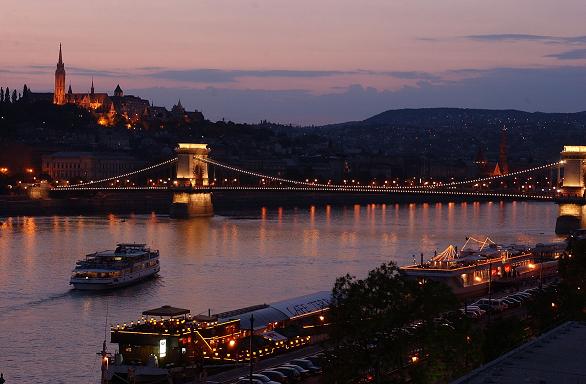
Driver quotes on the Hungarian Grand Prix.
Mark Webber: “The Hungaroring is a good little venue and we’ve had some good races there in the past. Obviously overtaking has not been easy on that circuit, but it will be interesting to see how the cars perform there as it’s a hot race. The middle sector is very, very busy and you need to have a good balance over the top of the hill. In general, it’s a track that I enjoy, I like driving there and of course we’re looking forward to doing well before the Summer break.”
Sebastian Vettel: “The race in Budapest is very popular and the city and the Danube offer many opportunities for fans off the track. I like the city a lot and I made my debut in 2007 with Scuderia Toro Rosso at the Hungaroring. The track itself is one of the slowest on the calendar, but as a driver you shouldn’t underestimate it, as there are a lot of opportunities to make mistakes. It can be very hot and that means the track can be very demanding physically. In addition, the surface has many bumps which shake you around a lot.”
Heikki Kovalainen: “I had my first Formula One win in 2008 in Hungary so it’s always good to come back to the Hungaroring. It’s fair to say I have some pretty good memories from here and I always have great support from the Finnish fans in Hungary. There’s always a lot of Finns in the crowd as I think it’s a bit easier for them to get to Hungary, and whenever there’s Finnish fans around there’s always a great atmosphere!
“Technically the circuit is quite tricky as it is a mix of fast and slow corners and even though the cars run with maximum downforce you have to get the setup right for the quick and the slow stuff. The first sector is mostly about straight lines and outright speed but then you get into Sector 2 where it starts to get tight and twisty. The car is generally set up for those corners and if you have a good flow through there you can usually gain some time in that sector and improve on your lap time, if you set yourself and the car up correctly. You need to have good balance over the kerbs so that you can attack them, build up a good rhythm, and maintain your speed over the whole lap.
“The track also evolves a lot throughout the weekend. It usually starts off in quite a slippery state, but by the time we reach qualifying the grip levels can be pretty decent, assuming the weather has remained hot and dry. You just have to keep the evolution in mind during the first practice session and if the balance isn’t quite right you shouldn’t worry too much or dramatically change the set up of the car – when the circuit starts to rubber in the car will improve. The rear of the car starts to become more stable and the track always improves as the weekend progresses.”
Vitaly Petro: “I have very good memories of Hungary and am really looking forward to getting back to Budapest. In 2010 I outqualified my teammate Robert Kubica there and I finished fifth in the race, plus it’s the country where I won my first race in Formula 3000.
“It’s a challenging circuit for a few reasons. First, it’s pretty physical as it’s usually very hot, and second it’s a very technical track with tight sections so you need the right setup for each session on track. Physically, despite the heat, it isn’t too bad although you need some serious concentration behind the wheel for all 70 laps of the race!
“Hungary will be the last race before our summer break in August and we all need a good break. Before we go on vacation it’ll be important to stop, analyse and discuss how the season is going with the guys so we can make adjustments for the remaining races. But then it’ll be time to switch off our own engines for two or three weeks, before coming back for training with recharged batteries for the next half of the season.”
Pedro de la Rosa: “The Hungaroring is the permanent Monaco and a circuit where I have very good memories since I achieved a podium there in 2006. I’m really looking forward to going this year because it’s a circuit where our car should adapt pretty well, as there are many slow corners. It’s similar to Monaco, and we were pretty competitive there, so I’m full of hope. The asphalt evolves a lot throughout the weekend and the track gets quicker so it’s very important to interpret this. In Germany we had a good performance and a good race so we’re looking forward to Hungary because we should do better there”.
Narain Karthikeyan: “I’ve only raced once in Hungary, in 2005, and I remember it being quite a technical and challenging track. Seven years have passed since then so I’m going to have to work hard and make the most of the practice sessions to get used to the track. The car should adapt well and we’re also arriving with a good feeling after the German Grand Prix, so the ideal thing would be to finish off that good work with another positive result in Hungary so that we can go on holiday feeling good about ourselves”.
DiResta on Budapest
Paul, we’re now at the halfway point of the season – how do you look back on the first ten races?
As a team we have to be pleased with the start we’ve had to the year. We’ve had some strong races and scored more points compared to the same time last year. We seem to have one of the more consistent cars in terms of performance and I think traditionally we’ve been a team that gets stronger as the year progresses. With ten races still to go there are a lot of points on offer and a long way to go in the championship.
What memories do you have from racing in Hungary in the past?
I had a great race there last year when I finished seventh just before the summer break. It was the best way to end the first part of the season because there had been a few races up to that point where things hadn’t gone our way. Getting the result in Hungary helped make up for some of the bad luck earlier in the season.
Sum up the challenge of racing at the Hungaroring?
It’s a short track, but it’s very demanding on you physically and mentally. I suppose it’s like a street track in terms of the layout and all the corners seem to flow into each other so you need to find a good rhythm. Because of the tight nature of the lap, there has never been much overtaking, so it’s always a good test of the effectiveness of the DRS.
Hulkenberg on Budapest
Nico, let’s look back on your home race and the first half of the year – have things gone as you expected?
To be honest, I would have hoped for a few more points than I actually have. There were some races where I had some bad luck, which cost me points, especially in Australia where I had a collision on lap one and in Bahrain with a clutch issue at the start. But on the other hand, I am happy with the improvement in performance from both the car and myself. We are regular top ten runners and I hope that we will move a little further up the grid in the second half of the season.
Tell us about your memories of racing at the Hungaroring…
I have some very good memories, especially looking back to 2010 when I finished sixth, which at that time was the best result of my Formula One career. Also, in 2009 I won the GP2 race at the Hungaroring. So I’m looking forward to going back there, especially because I like the city of Budapest: it’s just a nice place to visit.
How do you see your chances for this year’s race?
I think we should be able to fight for points because we recently looked quite strong on circuits that don’t have so many fast corners, such as Valencia. Although it’s quite a slow circuit, it’s very difficult to get a good lap time because you need to hook up all the corners perfectly, so it’s quite challenging.
